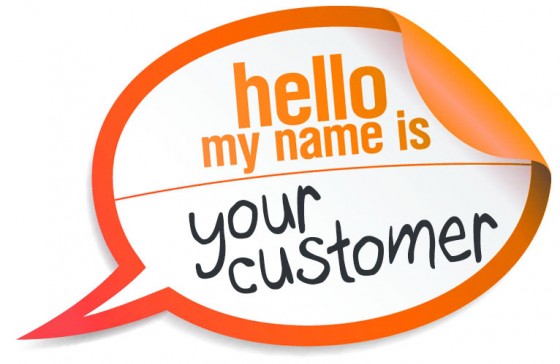 It’s inevitable in business. Now and again you’re going to do something that annoys a customer and they’ll want to complain about it.
It’s inevitable in business. Now and again you’re going to do something that annoys a customer and they’ll want to complain about it.
Dissatisfied customers used to pick up the phone or pen you a stern letter to air their grievances. But now it’s easier, and perhaps more satisfying for them, to jump onto social media and give your business a good ear bashing in full public view.
It’s like your dirty laundry hanging out for the world to see.
Fret not! You can take steps to improve the situation. Here are some suggestions for dealing with those unmentionables.
DO…
DO keep your virtual ears open for signs of discontent
Monitoring what’s being said about your business online will give you valuable insights in general, but it will also alert you to customer issues that need addressing.
Check your social networks for new comments every day and sign up for free tools like Google Alerts and Social Mention so you watch for conversations across the wider web.
DO keep any negativity in perspective
People are more likely to shout out when they’re unhappy than when everything is just fine. See a negative review or comment as an opportunity to improve and impress.
DO respond quickly
As soon as you’re aware of a problem, jump in and respond. The longer you leave it, the more disillusioned the individual may grow as they feel you’re not listening to them.
DO take action
Unhappy customers don’t just want an apology – they want to know how you’re going to fix their problem. If you’ve mucked up, apologise sincerely and explain what you are going to do to rectify the situation. Show them you’re human and show you care.
If the complaint is a misconception, reply with polite but factual information.
DO take the conversation offline if you need to
Once you have publicly acknowledged the feedback, take angry or aggressive customers away from the public forum and resolve their issues by phone or email directly. You can return to the public forum once the issue is resolved to post a friendly follow up.
DON’T…
DON’T ignore or delete negative comments
You’ll infuriate an unhappy customer if you ignore or delete their feedback and this can lead to further aggravated remarks. Reply to negative comments openly and respectfully and only delete comments if they are actually offensive or illegal.
DON’T get emotional
Whilst it’s natural to feel defensive when your business is under attack, put your emotions aside whilst you deal with the complaint. Try to understand that your customer is just disappointed because you didn’t meet their expectations in some way.
DON’T keep your strategy for handling complaints to yourself
Make sure any of your staff that may be exposed to negative comments about your business understands how you want them handled.
Overall, focus on giving your customers a great experience. Lessen the likelihood of negative feedback by always putting the customer first. After all, prevention is better than cure!
 We love adding new stuff to Spiffy Stores, and we’re pleased to announce that we’ve just finished putting the final polish on a brand new feature.
We love adding new stuff to Spiffy Stores, and we’re pleased to announce that we’ve just finished putting the final polish on a brand new feature. A blog is an important part of any business’s online marketing toolkit. If your posts are frequent, interesting and well-written, they’ll help you build a relationship with your visitors and attract new traffic to your site. What’s not to like about that!
A blog is an important part of any business’s online marketing toolkit. If your posts are frequent, interesting and well-written, they’ll help you build a relationship with your visitors and attract new traffic to your site. What’s not to like about that! Aaargh! It’s that time of year again… It seems like only yesterday I was packing away the baubles and vacuuming glitter off the rug, but now there are less than 7 weeks till the Big Day.
Aaargh! It’s that time of year again… It seems like only yesterday I was packing away the baubles and vacuuming glitter off the rug, but now there are less than 7 weeks till the Big Day. Back in the days when Mum wore a pinny and Dad sported a hat to work, shopping wasn’t the soulless chore it is now. It was a social event.
Back in the days when Mum wore a pinny and Dad sported a hat to work, shopping wasn’t the soulless chore it is now. It was a social event. The answer is already in your hands. And it’s free.
The answer is already in your hands. And it’s free. Readers of this blog will know I’m a huge fan of taking photos with my iPhone.
Readers of this blog will know I’m a huge fan of taking photos with my iPhone. A great product image is essential if you want to sell your goodies online. But we can’t all afford to have professional photos taken, and manufacturers’ photos can be a bit, well… dull, can’t they.
A great product image is essential if you want to sell your goodies online. But we can’t all afford to have professional photos taken, and manufacturers’ photos can be a bit, well… dull, can’t they.
 Jamie Oliver was on to something when he created nutritious meals that busy families could make in 30 minutes (although it always takes me a bit longer). It was a breakthrough in weeknight cooking and stores sold millions of his cookbooks to hungry, time-poor cooks worldwide.
Jamie Oliver was on to something when he created nutritious meals that busy families could make in 30 minutes (although it always takes me a bit longer). It was a breakthrough in weeknight cooking and stores sold millions of his cookbooks to hungry, time-poor cooks worldwide.